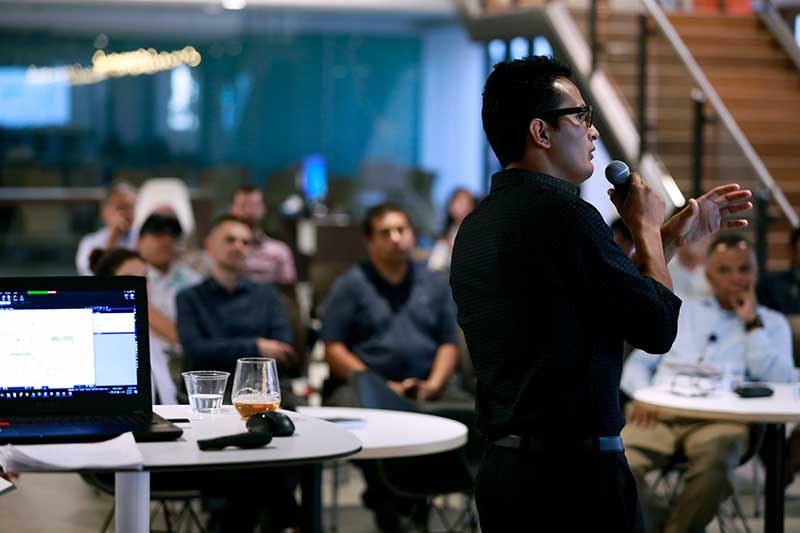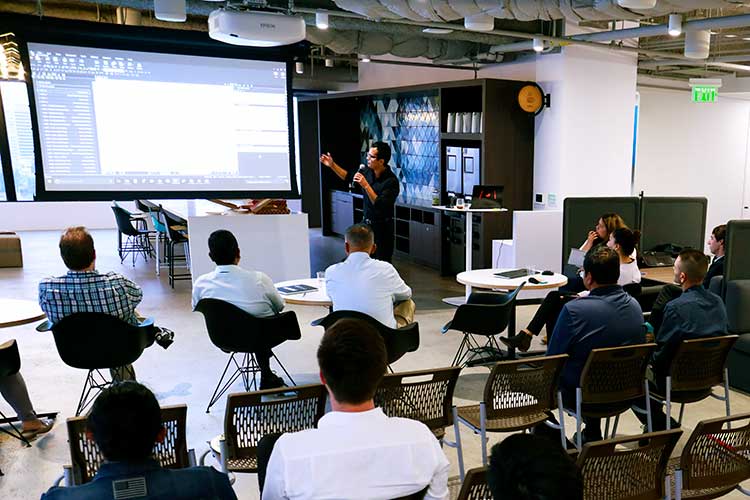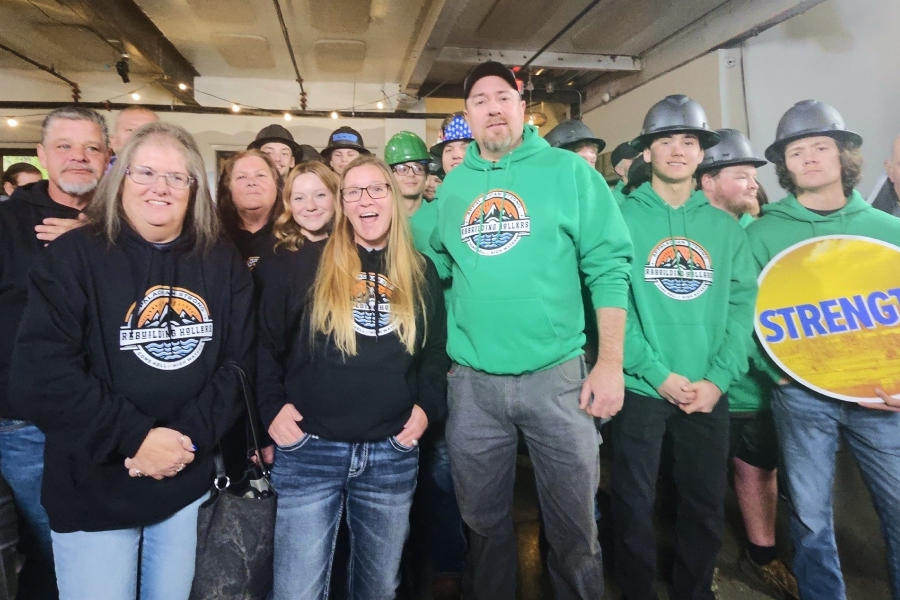In 2019, more AEC industry companies invested in internal Bluebeam User Groups (BUGs).
A panel discussion at Bluebeam’s XCON user conference in August 2019 looked at the value in investing in user groups.
The panelists:
- Daniel Powell, Construction Project Manager, Georgia Institute of Technology
- Lisa Neal, VDC Engineer, Skanska USA Building Inc.
- Nik Rangel, Design Innovation Leader, Jacobs
Each of the panelists demonstrated how the implementation of a user group helped bridge knowledge gaps across their organization, which helped them streamline training and identify “power users” within the company.
Georgia Institute of Technology
Daniel Powell is the construction project manager for the design and construction department at the Georgia Institute of Technology. He manages projects from cradle to grave—from design inception programming all the way through construction—centralized in about 400 acres in downtown Atlanta, Georgia.

Powell spoke during the panel discussion about going from a paper design review system to a digital review system using Bluebeam’s Studio Sessions. He said the school had to start from scratch and have global training for its different clients and within the operations and maintenance facilities.
To achieve that digital review system, the school needed to train people on Bluebeam, so it started an internal user group, known as GT bug.
Doing so shortened the review time for drawings for small projects from almost two years to about 10 months, Powell said. Previously, all drawings were either shipped from person to person or were included as part of “page turn” meetings, where everybody came to one place, flipped pages and took notes.
This method was inefficient. It took time to flip through the hundreds of pages of documents, comments were duplicated and people missed changes.
The GT user group has helped streamline processes and made its users more productive.
Skanska USA Building
Lisa Neal has a different background with her role at Skanska USA Building, where she’s been a VDC Engineer for about five years. Knowledge sharing is a significant effort for large companies like Skanska.

“We have a lot of different offices in a lot of different regions,” Neal said. “In Texas alone, we have three offices, so every project manager and project engineer has their own preferences and their own tools.”
The first task the company faced when designing internal Bluebeam guidelines, standards and protocol was “really just to understand the audience and the use cases,” Neal said.
That meant spending six months “polling, surveying, collecting data and developing our roles and responsibilities matrix,” Neal said. The surveys were sent to all of their pre-construction managers and VDC managers regionally; they asked questions like, “Are your teams using Bluebeam, and for what? Are they using any alternatives that we should know about, and for what?”
That information was taken in, and a roles-and-responsibilities matrix was built to be either a guide for new Bluebeam users or an a la carte menu, where someone in pre-construction might, for instance, learn how to do quantity takeoffs.
Skanska identified its power users across all offices. It then asked those power users: “Do you have any training or instructions that you’ve typed up, or basically any training or reference materials?”
That data was then compiled and restructured in an existing Bluebeam community site that no one had really used for a few years.
Skanska then launched the research part of its user group in December 2017, Neal said. Since, it has seen 20% user growth.
“If you’re curious about starting an internal bug, or if there already is one and you just want to re-energize it, it’s certainly worth its weight in gold,” Neal said.
Jacobs
Finally, Nik Rangel of Jacobs said that the company is still in the early stages of evaluating an internal user group.
With more than 10,000 users, he said there is certainly a talent pool to create one. In the initial rollout phase, Rangel said, the company would plan specific department champions, so that within these departments there would be a specific go-to person for that team.
That, Rangel said, would help the company develop a hierarchy of power users and also further horizontal coordination across its offices around the world.











